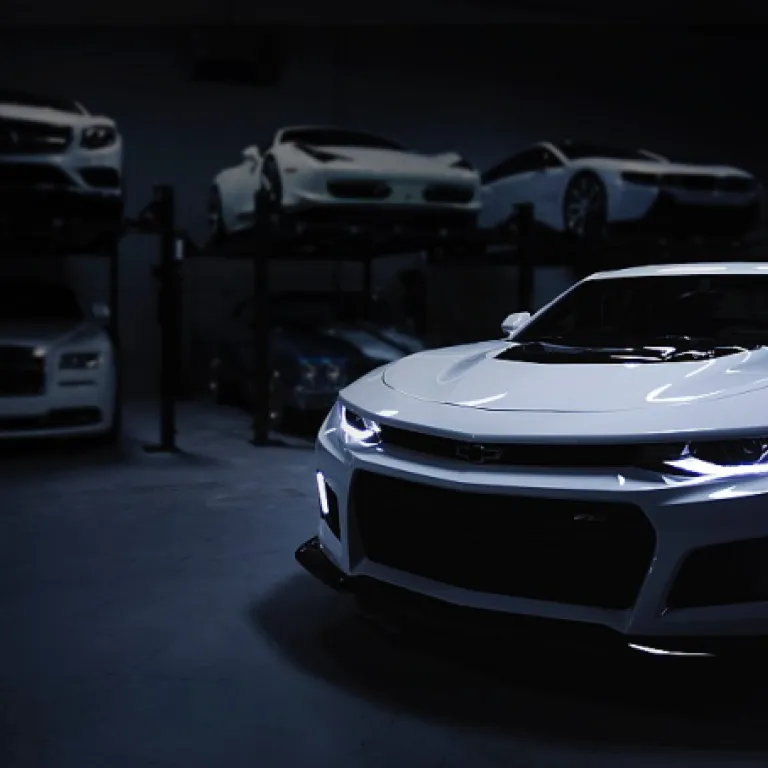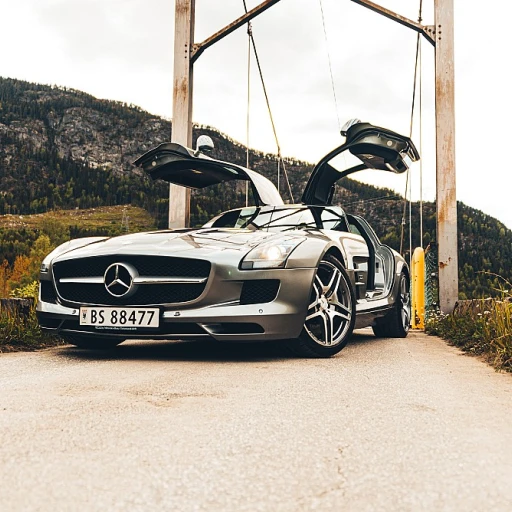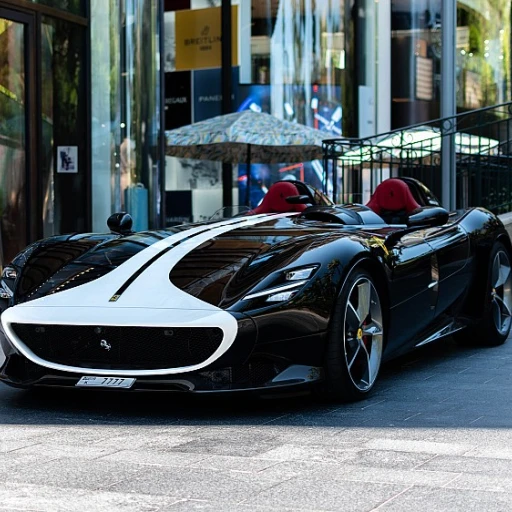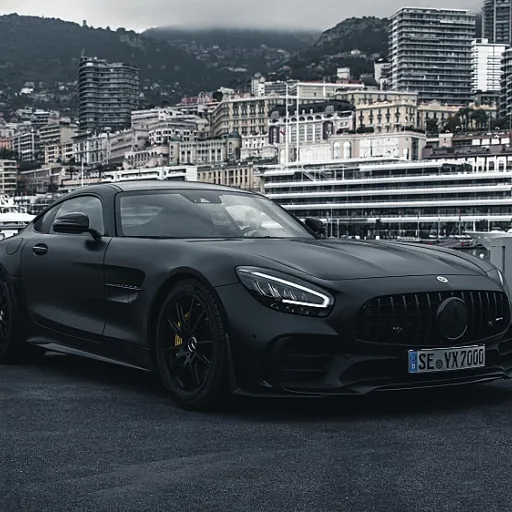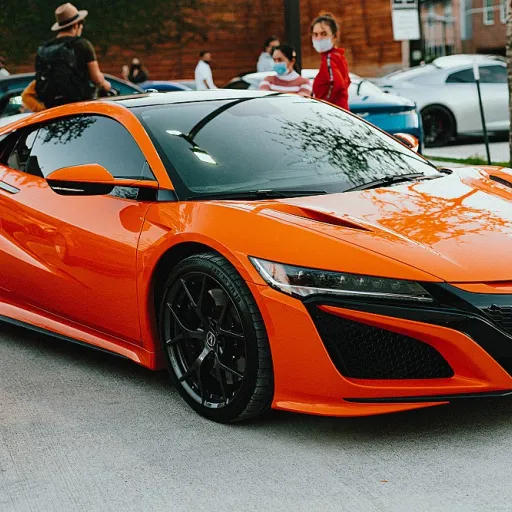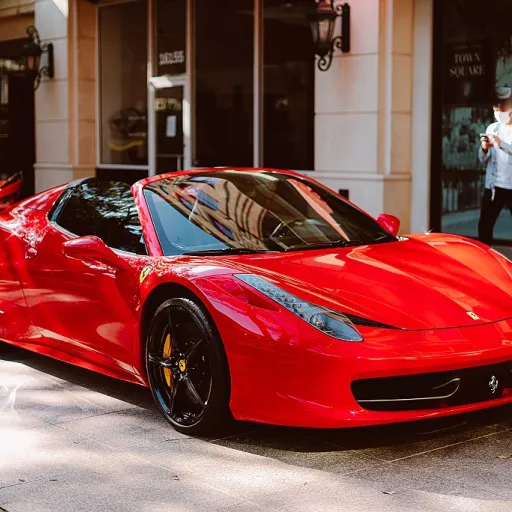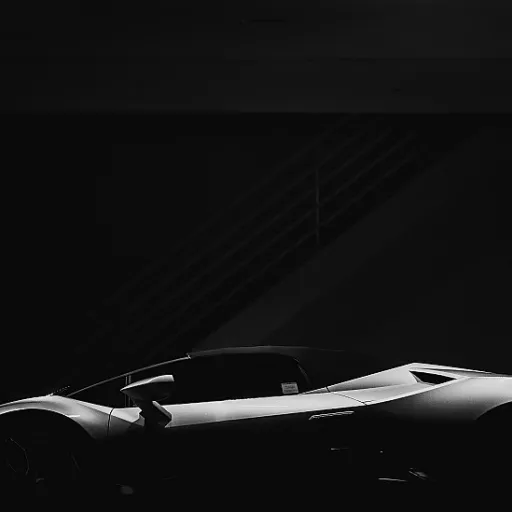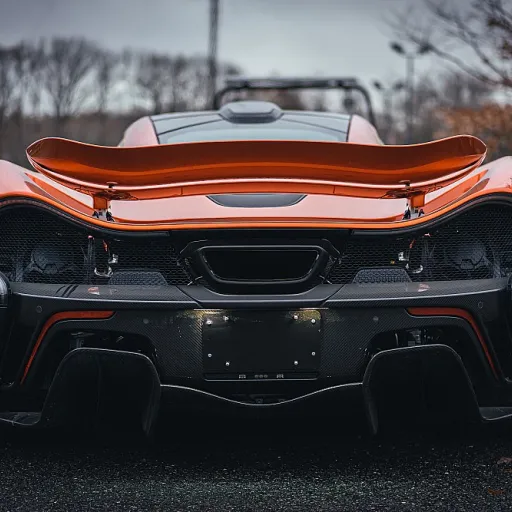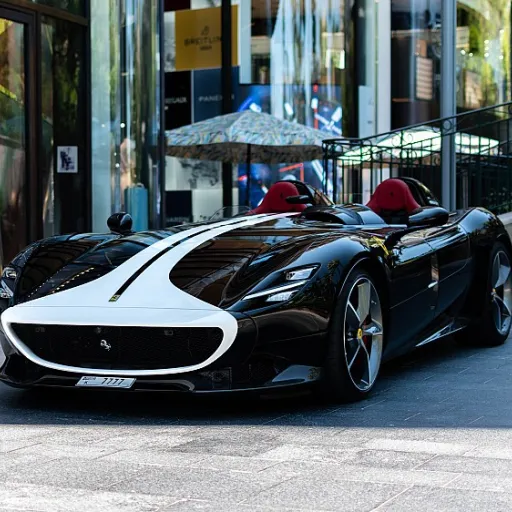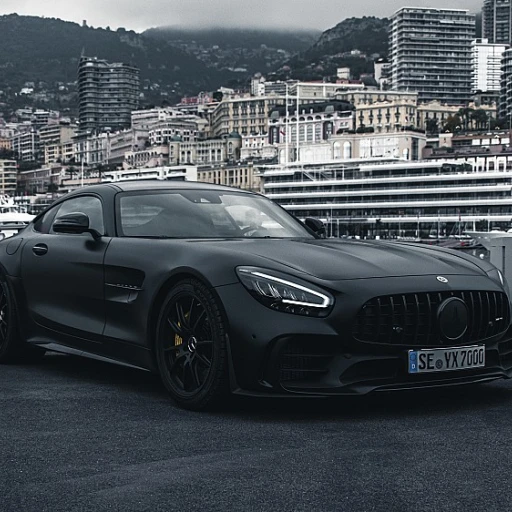
The transformation of luxury: how the 1992 Cadillac Seville redefined expectations
The 1992 Cadillac Seville marked a pivotal moment in the evolution of luxury cars, introducing a new generation that blended American heritage with European-inspired design. This model year unveiled a body that was more aerodynamic and sophisticated, reflecting a shift toward a modern aesthetic that resonated with discerning owners. The Seville, available in both SLS and STS trims, set a new standard for luxury car interiors, offering amenities such as leather seating, dual power front seats, and an advanced anti-lock braking system.
Cadillac’s decision to continue with front wheel drive in the Seville was strategic, enhancing traction and maximizing interior space for passengers. The 4.9-liter V8 engine delivered 200 horsepower and 275 lb-ft of torque, ensuring that both the SLS and STS provided a dynamic driving experience. The 4-speed automatic transmission complemented the engine’s power, making the Seville both responsive and refined on the road.
Owners of the 1992 Cadillac Seville appreciated the seamless integration of performance and comfort, with features like cruise control and power windows enhancing daily usability. The model’s body design, influenced by the Cadillac Voyage concept, signaled a new era for the brand. The Seville’s rear suspension and touring sedan configuration contributed to a smooth, controlled ride, distinguishing it from other luxury cars of its time.
With its introduction, the Seville STS quickly garnered acclaim, earning the title of Motor Trend magazine's Car of the Year and a spot on Car and Driver magazine's Ten Best list. These accolades underscored the model’s impact on the luxury car market, positioning the Seville as a benchmark for both style and substance. The 1992 Cadillac Seville was more than just a car; it was a statement of innovation and prestige, appealing to those who valued both tradition and progress.
Performance and engineering: exploring the heart of the Seville STS and SLS
At the core of the 1992 Cadillac Seville was its robust 4.9-liter V8 engine, a testament to Cadillac’s commitment to delivering both power and refinement. This engine, paired with a 4-speed automatic transmission, provided a harmonious balance between acceleration and smoothness, making the Seville STS and SLS stand out among luxury cars. The front wheel drive configuration was a deliberate choice, offering enhanced stability and better handling in various driving conditions.
The Seville’s engine was engineered for both performance and efficiency, achieving a 0-60 mph acceleration in just 8.9 seconds. Fuel economy figures, with 15 mpg in the city and 23 mpg on the highway, reflected the car’s ability to blend spirited driving with practicality. The anti-lock braking system, a standard feature, elevated safety and control, reinforcing the Seville’s reputation as a forward-thinking luxury car.
Distinctive elements such as the touring sedan suspension in the STS and the refined rear suspension setup contributed to the car’s dynamic character. The larger wheel options and sport-tuned chassis of the Seville STS enhanced cornering and responsiveness, appealing to drivers who demanded more from their luxury cars. The SLS, meanwhile, prioritized comfort without sacrificing the performance expected from a Cadillac Seville.
For those interested in the technical evolution of luxury sedans, the Seville’s integration of advanced engineering features set it apart from competitors like the Oldsmobile Aurora and the Eldorado Seville. The model year’s innovations, including the speed automatic transmission and the seamless transition between front and rear suspension dynamics, established the Seville as a leader in its class. For a deeper dive into the technical specifications and performance data, explore our comprehensive Cadillac Seville performance guide.
Design philosophy: European influences and the evolution of the Seville body
The 1992 Cadillac Seville’s body design marked a departure from traditional American styling, embracing a more aerodynamic and European-inspired silhouette. This transformation was not merely cosmetic; it was a strategic move to attract a younger, more cosmopolitan clientele who valued both luxury and modernity. The Seville’s sleek lines, sculpted front fascia, and refined rear profile contributed to its commanding presence on the road.
Cadillac’s design team drew inspiration from the 1988 Cadillac Voyage concept, incorporating elements that would define the fourth generation Seville. The model’s proportions, with a balanced wheelbase and carefully contoured panels, enhanced both aesthetics and aerodynamics. The front wheel drive layout allowed for a more spacious cabin, maximizing comfort for all occupants and setting a new benchmark for luxury cars in the United States.
Attention to detail was evident in every aspect of the Seville’s construction, from the quality of materials used in the interior to the precision of the body assembly. The touring sedan configuration, particularly in the STS, featured larger wheels and a sportier stance, appealing to those who sought both elegance and performance. The SLS, while more understated, retained the signature Cadillac luxury, making it a versatile choice for a range of luxury car owners.
The Seville’s design evolution also influenced other models in the Cadillac lineup, including the Eldorado and the second generation Seville. The integration of advanced features such as anti lock brakes and power-operated systems reflected Cadillac’s commitment to innovation. For enthusiasts interested in the broader impact of this design shift, our Seville design evolution analysis provides further insights into how the 1992 model year shaped the future of luxury cars.
Luxury and technology: interior innovations and owner experience
Inside the 1992 Cadillac Seville, owners were greeted by a cabin that exemplified the essence of luxury cars. The use of premium leather, dual power front seats, and a comprehensive suite of electronic amenities set the Seville apart from its contemporaries. Features such as power windows, cruise control, and an advanced audio system catered to the expectations of discerning luxury car owners.
The Seville’s interior was designed with both comfort and functionality in mind, offering ample space for five passengers and a thoughtfully arranged dashboard. The inclusion of driver and passenger airbags, along with child door locks, underscored Cadillac’s commitment to safety. The anti lock braking system, a notable innovation at the time, provided an added layer of confidence for drivers navigating diverse road conditions.
Owners of the Seville STS and SLS appreciated the seamless integration of technology, from the speed automatic transmission to the responsive climate control system. The model’s attention to detail extended to the rear suspension, which contributed to a smooth and composed ride, even on challenging surfaces. The opens window feature, allowing for effortless ventilation, was a subtle yet appreciated touch in the luxury car segment.
For those seeking a blend of tradition and modernity, the 1992 Cadillac Seville delivered an experience that was both familiar and forward-looking. The model’s reputation for reliability and comfort made it a preferred choice among luxury car enthusiasts in the United States.
Market impact and legacy: the Seville’s influence on luxury cars
The introduction of the 1992 Cadillac Seville had a profound impact on the luxury car market, revitalizing Cadillac’s brand image and attracting a new generation of buyers. The model’s success was not only reflected in sales figures but also in the recognition it received from industry experts. As Motor Trend magazine stated, "The Seville Touring Sedan was Motor Trend magazine's Car of the Year for 1992." Car and Driver magazine echoed this sentiment: "It also made Car and Driver magazine's Ten Best list that year."
This acclaim validated Cadillac’s decision to embrace a more dynamic and European-influenced design philosophy. The Seville’s combination of performance, comfort, and advanced features positioned it as a formidable competitor to established European luxury brands. The model year’s emphasis on front wheel drive and innovative engineering set a precedent for future Cadillac models, influencing the development of the Northstar engine and subsequent generations.
The Seville’s legacy extended beyond its immediate market impact, shaping the direction of luxury cars in the United States and abroad. The model’s touring sedan and sedan STS configurations became benchmarks for other manufacturers, inspiring advancements in rear suspension technology and automatic transmission systems. The Seville’s enduring appeal among collectors and enthusiasts is a testament to its significance in automotive history.
For those interested in the broader implications of the Seville’s success, the model’s influence can be seen in the evolution of the Eldorado, the Oldsmobile Aurora, and other luxury cars of the era. The 1992 Cadillac Seville remains a symbol of innovation, elegance, and the relentless pursuit of excellence in the luxury car segment.
Ownership insights: maintenance, value, and community perspectives
Owning a 1992 Cadillac Seville is a unique experience, blending the prestige of a classic luxury car with the practical considerations of maintenance and value retention. The Seville’s robust engine and reliable transmission have contributed to its reputation for longevity, making it a favored choice among collectors and enthusiasts. Regular maintenance of the front wheel drive system and rear suspension is essential to preserve the car’s performance and comfort.
The value of the Seville, particularly the STS and SLS trims, has remained stable in the collector market, with well-maintained examples commanding premium prices. The model’s distinctive body design and advanced features, such as anti lock brakes and speed automatic transmission, continue to attract interest from those seeking a blend of heritage and innovation. The opens window feature and luxury appointments further enhance the ownership experience, setting the Seville apart from other cars of its era.
Community forums and owner groups provide valuable resources for maintaining and restoring the Seville, offering insights into common issues and best practices. The availability of parts for the Northstar engine and other key components ensures that the Seville remains a viable option for long-term ownership. The model’s legacy is celebrated at events and gatherings, where enthusiasts share their passion for the Cadillac Seville and its place in automotive history.
For those considering the purchase or restoration of a 1992 Cadillac Seville, understanding the nuances of the model year and its various configurations is crucial. The second generation Seville, along with the touring sedan and sedan STS variants, offers a range of options to suit different preferences and budgets. Engaging with the broader luxury car community can provide additional support and inspiration for current and prospective owners.
Comparative analysis: Seville versus contemporaries in the luxury segment
In the competitive landscape of luxury cars, the 1992 Cadillac Seville distinguished itself through a combination of innovative engineering, refined design, and advanced technology. When compared to contemporaries such as the Oldsmobile Aurora and the Eldorado Seville, the Seville’s front wheel drive layout and 4.9-liter V8 engine offered a unique blend of performance and practicality. The model’s automatic transmission and touring sedan configuration provided a driving experience that was both engaging and comfortable.
The Seville’s body design, influenced by European trends, set it apart from other American luxury cars, appealing to a broader audience. The inclusion of features such as anti lock brakes, power-operated systems, and a sophisticated rear suspension underscored Cadillac’s commitment to safety and innovation. The model year’s emphasis on luxury and technology positioned the Seville as a leader in its segment, challenging established norms and setting new benchmarks.
Owners of the Seville STS and SLS benefited from a range of options, from sport-tuned suspensions to advanced interior amenities. The model’s versatility allowed it to compete effectively with both domestic and international rivals, cementing its status as a cornerstone of the Cadillac lineup. The Seville’s influence extended to subsequent generations, shaping the development of the Northstar engine and inspiring advancements in luxury car engineering.
Key statistics: performance and features of the 1992 Cadillac Seville
- Engine displacement: 4.9 liters
- Horsepower: 200 hp
- Torque: 275 lb-ft
- Fuel economy (city): 15 mpg
- Fuel economy (highway): 23 mpg
- 0-60 mph acceleration: 8.9 seconds
- Base MSRP (SLS): $35,575
- Base MSRP (STS): $38,575
Frequently asked questions about the 1992 Cadillac Seville
What are the main differences between the Seville SLS and STS trims?
The Seville SLS focused on comfort and luxury, offering a refined ride and premium interior features. The STS, or Seville Touring Sedan, included performance enhancements such as a sport-tuned suspension and larger wheels, providing a more dynamic driving experience. Both trims shared the same 4.9-liter V8 engine and advanced safety features.
How does the 1992 Cadillac Seville compare to other luxury cars of its era?
The 1992 Cadillac Seville stood out for its European-inspired design, advanced engineering, and comprehensive suite of luxury features. Its front wheel drive layout and robust V8 engine offered a unique combination of performance and practicality, making it a strong competitor against both domestic and international luxury cars.

